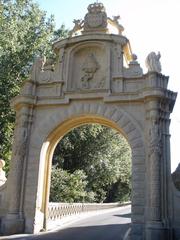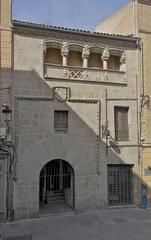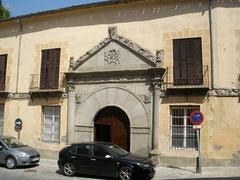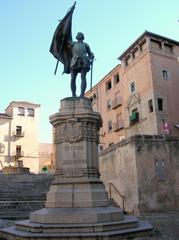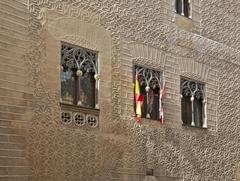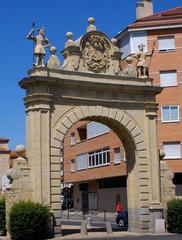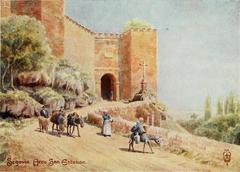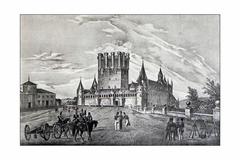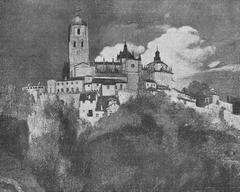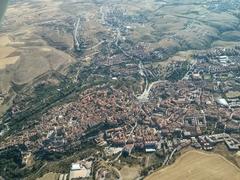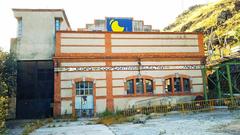Aqueduct of Segovia Visiting Hours, Tickets, and Historical Sites Guide
Date: 14/06/2025
Introduction: The Aqueduct of Segovia’s Significance
The Aqueduct of Segovia is an iconic symbol of Roman engineering and a central piece of Spain’s cultural heritage. Built between the late 1st and early 2nd centuries CE, most likely around 98 CE during the reign of Emperor Domitian, the aqueduct was constructed to bring fresh water from the Frío River, located approximately 15–17 kilometers from Segovia’s city center (History Hit; Britannica). Its remarkable preservation and monumental scale make it one of the best-known Roman structures on the Iberian Peninsula and a UNESCO World Heritage Site since 1985 (Britannica; spain.info).
The aqueduct’s 167 granite arches, assembled without mortar, stretch in two tiers and soar up to 28.5 meters above Plaza del Azoguejo. This enduring feat of Roman construction not only fueled Segovia’s urban development for centuries but continues to shape the city’s identity and charm, attracting visitors from around the world.
Contents
- Roman Origins and Historical Context
- Engineering and Architectural Features
- Preservation and UNESCO Status
- Visitor Information: Hours, Tickets, Accessibility
- Best Times and Tips for Visiting
- Nearby Attractions and Itinerary Ideas
- Frequently Asked Questions (FAQ)
- Visuals and Multimedia Recommendations
- Internal Links
- Conclusion and Recommendations
- Sources
Roman Origins and Historical Context
Historical Background
The Aqueduct of Segovia is believed to have been constructed during the reigns of Emperors Domitian, Nerva, or Trajan, around the end of the 1st century CE (History Hit; Britannica). Segovia’s location on the Spanish central plateau and proximity to the Sierra de Guadarrama made it strategically important for the Romans. Before Roman conquest, the area was inhabited by the Arevaci people (Wikipedia). The aqueduct was designed to deliver essential water for public baths, fountains, and private homes, supporting a thriving Roman and later medieval city.
Engineering and Architectural Features
Design and Structure
The aqueduct’s route channels water from the Frío River, approximately 17 kilometers away, through the plains to Segovia’s center. The most visible and celebrated section extends 728 meters through the city, featuring 167 arches arranged in two tiers (Britannica; Wikipedia). Built from nearly 24,000 granite blocks cut and fitted without mortar, its stability relies on careful engineering principles described by Roman architect Vitruvius (Go Ask a Local).
- Tallest point: 28.5 meters at Plaza del Azoguejo
- Arches: 167 (75 upper, 36 lower, others single arches in main section)
- Granite Blocks: Approx. 24,000, sourced locally
Water Channel and Operation
At the top, a U-shaped channel (0.55 m high, 0.46 m wide) carried water to a large tank outside the city, from which it was distributed to public and private uses by gravity (Wikipedia). The aqueduct’s gentle gradient ensured a continuous water flow.
Preservation and UNESCO Status
Medieval to Modern Restoration
Despite robust Roman engineering, the aqueduct has needed restoration, notably after damage in the 11th century during the Moorish occupation. In the 15th century, 36 arches were reconstructed using original techniques, supervised by Don Pedro Mesa under the Catholic Monarchs (Wikipedia; History Hit).
Continuous care has kept the structure largely intact. In the 21st century, concerns about pollution and water leakage prompted new conservation programs. Its designation as a UNESCO World Heritage Site in 1985 ensures ongoing protection (Britannica).
Visitor Information: Hours, Tickets, Accessibility
Opening Hours and Fees
- Aqueduct Viewing: Open-air monument, accessible 24/7, free of charge (spain.info).
- Visitor Reception Centre: 10:00 am–6:00 pm; check for seasonal variations.
- Interpretation Centre (Royal Mint): Tues–Sun, 10:00 am–7:00 pm; closed Mondays; entry approx. €3 adults, discounts for students/seniors.
Guided Tours
Guided tours are available daily via the Visitor Reception Centre and local operators, often including the aqueduct’s history, engineering, and cultural significance. Tours may be booked in English and other languages (wherearethosemorgans.com).
Accessibility
The aqueduct and surrounding plazas are pedestrian-friendly and mostly wheelchair accessible, though some cobblestone areas may pose challenges. The Interpretation Centre is fully accessible.
Best Times and Tips for Visiting
- Best time: Early morning or late afternoon for optimal lighting and fewer crowds.
- Photography: Plaza del Azoguejo offers dramatic views; the nearby staircase and Mirador del Acueducto provide excellent panoramas.
- Weather: Spring and autumn offer the best conditions; summers can be hot, winters are cool but manageable.
Nearby Attractions and Itinerary Ideas
Segovia’s Old Town is compact, with key sites within a short walk:
- Alcázar of Segovia: Fairy-tale castle with panoramic views
- Segovia Cathedral: Gothic landmark near Plaza Mayor
- Jewish Quarter and Medieval Walls
- Royal Palace of La Granja de San Ildefonso: Short drive from city center
Sample itinerary: Start at the aqueduct, continue to Plaza Mayor and the cathedral, then finish at the Alcázar for sunset (wanderlustphotosblog.com).
Frequently Asked Questions (FAQ)
Q: What are the Aqueduct of Segovia visiting hours?
A: The aqueduct is outdoors and open 24/7.
Q: Is there an entrance fee?
A: No, viewing the aqueduct is free. The Interpretation Centre charges €3.
Q: Are guided tours available?
A: Yes, in multiple languages from the Visitor Reception Centre.
Q: Is the aqueduct wheelchair accessible?
A: The main plaza is accessible, but some historic streets may be uneven.
Q: How do I get there from Madrid?
A: High-speed AVE train from Madrid Chamartín (30 min), or direct bus from Moncloa (1 hr 20 min) (meetmeindepartures.com).
Visuals and Multimedia Recommendations
- Photos: Arches at Plaza del Azoguejo; panoramic views from the Mirador del Acueducto
- Alt tags: “Aqueduct of Segovia at Plaza del Azoguejo”, “Panoramic view from Mirador del Acueducto”
- Interactive map: Highlighting aqueduct, Alcázar, and cathedral
- Virtual tours and short educational videos on Roman engineering
Internal Links
Conclusion and Recommendations
The Aqueduct of Segovia is a breathtaking testament to Roman ingenuity and urban planning. Its free, 24/7 access makes it an unmissable highlight for anyone visiting Spain. Enhance your visit with guided tours, explore nearby attractions, and respect preservation guidelines to help protect this masterpiece for future generations. For more travel resources and real-time updates, download the Audiala app and connect with our community.
Sources
- History Hit – Aqueduct of Segovia Visiting Hours, Tickets, and Historical Guide, 2025
- Britannica – Segovia aqueduct, 2025
- Wikipedia – Aqueduct of Segovia, 2025
- Go Ask a Local – Segovia Spain Travel Guide, 2025
- Ancient Engineering Marvels – The Aqueduct of Segovia, 2025
- History Tools – Aqueduct of Segovia: History, Architecture, and Visitor Guide, 2025
- Spain.info – Aqueduct of Segovia Visitor Information, 2025
- Meet Me in Departures – Aqueduct of Segovia Visiting Hours, Tickets & Guide, 2025
- wherearethosemorgans.com – Segovia Day Trip Guide
- wanderlustphotosblog.com – Segovia Spain Travel Guide

